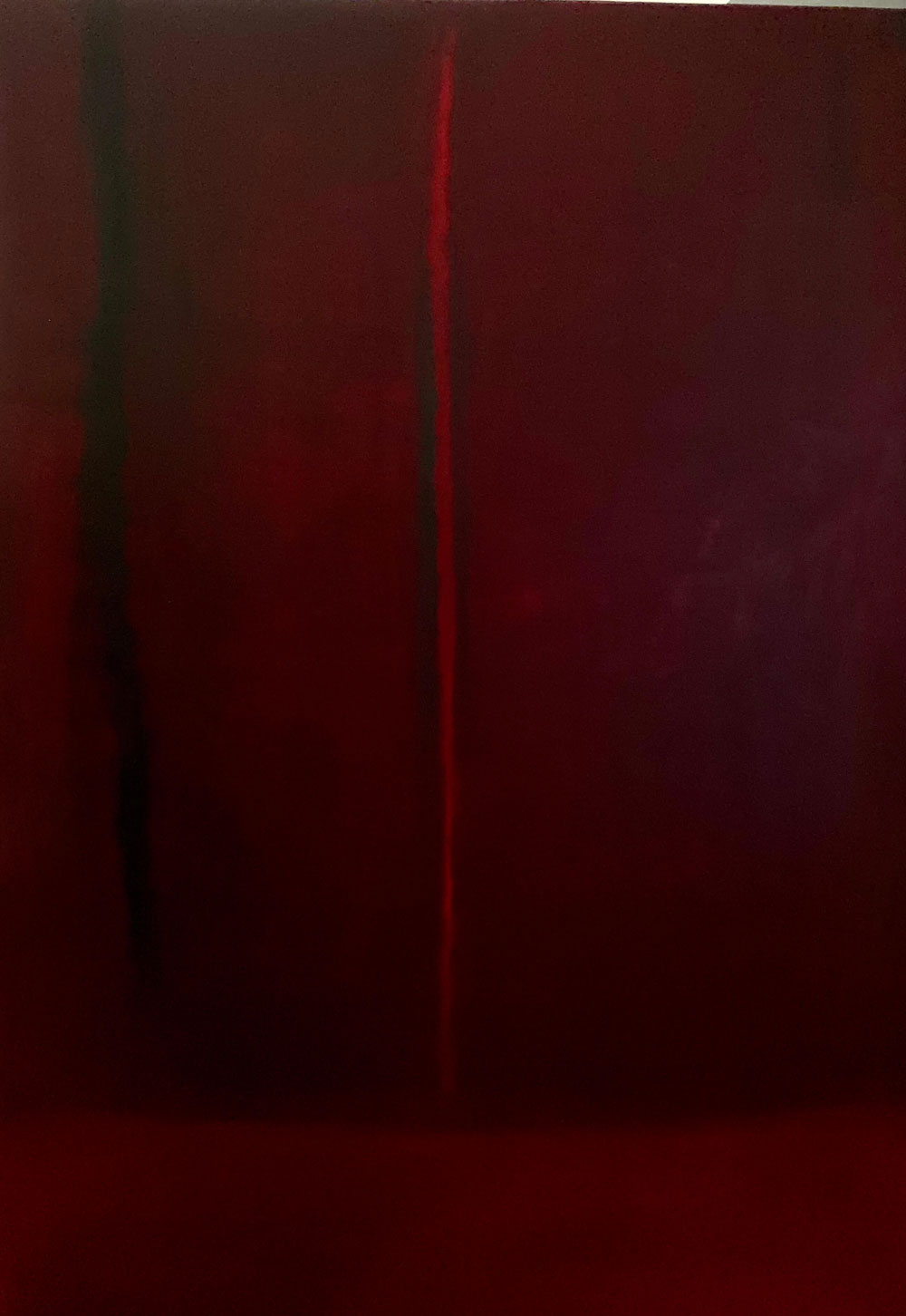The existence of an “edge,” a precipice, an ever-deepening chasm, a transitional space from one reality into the next—be it from spring to summer, enslavement to freedom, life to death—involves a commitment to a new beginning, an awakening of sorts into an alternate way of being. That is the hallmark of human existence—that change is inevitable. Conversely, as human beings, we are constantly attempting to ascribe order to our lives, to make some sense of the nonsensical, to divine the unknown. In the exhibition “The Edge of Order,” on view at Wonzimer Gallery, these two seemingly incontrovertible impulses are visually translated by Todd Williamson and Christina Craemer.
Although similar in theme, Williamson and Craemer adopt very different approaches to this subject. Williamson’s large-scale paintings feel nearly monolithic in their physicality and the sheer weight of their presence. In Magnificent Obsession (2020), for example, a deeply saturated red, reminiscent of Rothko’s complex palette, appears to seep into the picture frame with a single line of lighter crimson dividing the two halves of the image. As with Rothko’s luminous color field studies, Willamson’s paintings careen into near-spiritual territories, raising questions of subjectivity and our relationship to the living world. Is this small red line a division between two worlds, or a portal through our psyches to the other side of comprehension? Either way, in the end, it does not matter as the sheer expansiveness of the broadening field of red sweeps us deeper into the image.

Christina Craemer, Mirari Line, 2020. Courtesy Wonzimer Gallery.
Christina Craemer’s works are also imbued with a transcendent quality albeit drawn from completely different sources. Craemer’s Mirari Line (2020), as with all of her work in the show, celebrates the movement of paint, mimicking a waterfall at various stages. In this image, the sudden heft of white paint appears to “fall” from the top of the canvas, downward, much the way a waterfall builds up speed at the top, to crash violently at the bottom. The violence of nature is implied here as the tension at the top of the painting dissipates into a ghostly convergence at the bottom.
As our human consciousness continues to expand and retract, and we “edge” nearer our own understanding of our place in the cosmos, art that investigates the impulse toward spiritual awakening, feels more necessary than ever.


